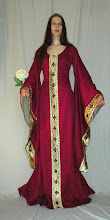Abstract
Of "Den store kriger sin hird beriger: Gaver og gæstebud, slægtsalliancer og
embeder. En analyse af samfundsmagten i Danmark i det lange 12. århundrede”. By Rasmussen, Palle, Historical Institute, University of Aarhus 2003.
The present paper attempts to shed more light on the society of the Danish high middle age, or more specifically “the long twelfth century”. Traditional scholarship has claimed that until the time of Harald Bluetooth (app. 958- 987), the country that later became Denmark was a realm of only occasionally gathered chiefdoms with no central organisation. Further it is held that even when the realm was united the king had little real power, but was instead more of a first amongst equals. According to traditional scholarship a slow development towards centralisation started at the time of Harald with the acceptance of Christianity and thus europerisation. A development that was completed in the time of the Valdemars (1158- app. 1250) with a strong and centralised kingdom based on titled royal representatives and institutions. Archeologists, however, have found evidence of centralisation before the Viking age. While recent historical research has uncovered evidence that society even under the Valdemars retained an organisational form where royal power was based on personal alliances with powerful magnates. This is a discrepancy that I try to shed some light on: how did power work in the twelfth century?
According to archaeologists the centralisation in the Iron Age started as magnates rose and began to make and uphold alliances with less powerful leaders by handing out gifts necessary for social reproduction and thus make them dependants. The feast played a vital part in this as a demonstration of power and setting for the exchange of gifts for loyalty, and the institution continued into the Viking Times where kings tied supporters to their cause this way in personal alliances. However, we do not know whether the institution continued into the middle age, and I undertake the task of shedding some light on that. Did personal alliances; parallel power hierarchies and the giving of gifts still permeate Danish society in the long 12th century? I specifically attempt to analyse the role and rituals of the giving of gifts and feasts in this respect. The development of institutional power can, however, not be overlooked and I also attempt to shed some light on that, as well as the development of the early state in the Iron Age. More specifically I analyse the role of personal alliances, gifts and feasts in that development.
It is impossible to say exactly when the realm of Denmark was united. However, there is archaeological evidence that the state in its earliest form did indeed develop during the Iron Age.
A state based on personal alliances and relations of its king. Alliances created by leaders showing generosity towards followers and allies, hence creating the strongest alliance to attain kingship.
This pattern seems to have continued even into the time of the Valdemars. Here we still find magnates with independent military forces and power, and consequently a large influence. We find that the king must tie these to his cause in order to attain and retain the throne. Hence, much of royal power in the long 12th century rests on the ability of the king to build alliances with the magnates of the realm. Valdemar the Great was a master of this and it appears that his successful bid for the throne is founded on an alliance with the relam’s greatest men. Despite the institutionalisation of power that is hastened under his and his successors’ reigns, much of their power is still based on the personal alliances with the magnates of the realm. In Valdemar’s case much of the power stems from the alliance with the Hvide family whose power is enhanced in the process. However, institutionalisation and feudalism on a European model is consciously furthered and encouraged in the reign of Valdemar and the processes are thus parallel.
The role of gifts and feasts in upholding these alliances are apparently also unchanged for much of the time. The ideal of the generous prince/ruler permeated society as we see it in our sources and the riches to reward one’s followers was still acquired mostly by plunder and tribute from neighbours as well as conquests. Even as we draw near to the close of the 12th century where our sources dwindle it seems as if the rewards were still handed out as gifts at feasts. This happened in a strict ceremony for the exchange of these gifts with loyalty that had not changed much from the Iron and Viking Ages. Alliances between the king and magnates and probably between the magnates themselves were confirmed in the same way, by exchange of gifts at lavish feasts.
As these rituals were apparently largely unchanged and played an unchanged role in the long twelfth century we have established continuity from the Iron Age gestation of the state to the medieval kingdom. We have further confirmed the role of personal alliances and identified one of the important elements in the maintenance of these alliances. However, it is impossible to overlook the fact that institutionalisation is indeed a fact of the long twelfth century as well, especially under the Valdemars. The two systems can easily have existed side by side in accord and interplay though and there is no need to believe that one excluded the other. Part of the rewards for the faithful followers of the king may likely have been titles and functions in the emerging institutions that slowly superseded the traditional system. This development started long before the middle ages though, and society and power was thus not as different in the long 12th century from the Viking and Iron Ages as we have traditionally been inclined to believe.
Sunday, 8 November 2009
Subscribe to:
Post Comments (Atom)


No comments:
Post a Comment